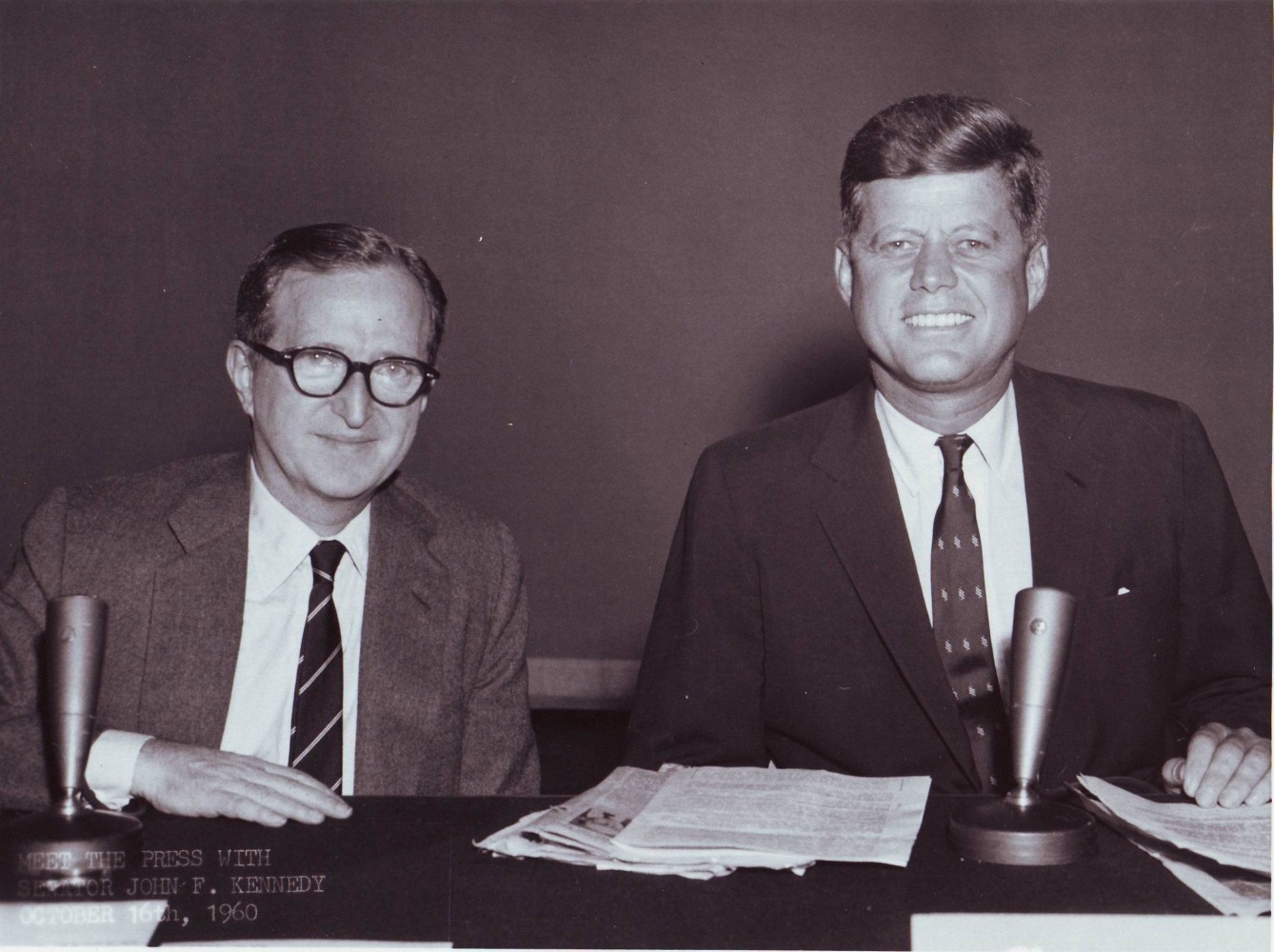 I am trying to figure out the moment in time news programs became game shows. I’m not sure exactly when this transformation took place. Maybe it was May 11, 2001. That was the date of Lynn Russell’s last broadcast as the anchor of CNN Headline News. Russell’s program consisted of a recap of current events which was updated every fifteen minutes, reminiscent of the CBS nightly news before it became a half-hour newscast on September 2, 1963.
I am trying to figure out the moment in time news programs became game shows. I’m not sure exactly when this transformation took place. Maybe it was May 11, 2001. That was the date of Lynn Russell’s last broadcast as the anchor of CNN Headline News. Russell’s program consisted of a recap of current events which was updated every fifteen minutes, reminiscent of the CBS nightly news before it became a half-hour newscast on September 2, 1963.
You might think the expansion of broadcast nightly news to 30 minutes and the addition of three 24/7 cable news networks would make it easier to “get the news.” Unfortunately, you would be wrong. This was never more evident than September 4, 2016. An AP wire story reported a 5.6 magnitude earthquake in Oklahoma. Interested in learning more, I turned on cable news. On CNN, instead of news, I encountered six talking heads discussing the impact on the presidential election of the latest “sound bite du jour.” In another era, the image would have been mistaken for an episode of Gene Rayburn hosting The Match Game. MSNBC was no better. It may be the “place for politics” but it is no longer “a place for news.”
 The Sunday morning network talk shows further represent the decline of broadcast journalism. Oh, for the days of Lawrence Spivak, the original host of Meet the Press. When watching archived videos such as the one pictured here with then Senator John F. Kennedy, you immediately notice three things. First, the panel is made up of credentialed correspondents from the major news services such as the Associated Press and United Press International. Second, only the principals (candidates, public officials or world leaders) are invited to appear. No surrogates allowed. Finally, the panel members never express their own opinion. They ask questions and trust the viewers to evaluate the guest’s response. If they thought the guest was avoiding the question or if the answer was suspect, they would challenge the interviewee with follow-up inquiries. Today, Meet the Pundits would be a more apt title for what is passed off as current affairs programming.
The Sunday morning network talk shows further represent the decline of broadcast journalism. Oh, for the days of Lawrence Spivak, the original host of Meet the Press. When watching archived videos such as the one pictured here with then Senator John F. Kennedy, you immediately notice three things. First, the panel is made up of credentialed correspondents from the major news services such as the Associated Press and United Press International. Second, only the principals (candidates, public officials or world leaders) are invited to appear. No surrogates allowed. Finally, the panel members never express their own opinion. They ask questions and trust the viewers to evaluate the guest’s response. If they thought the guest was avoiding the question or if the answer was suspect, they would challenge the interviewee with follow-up inquiries. Today, Meet the Pundits would be a more apt title for what is passed off as current affairs programming.
What have we sacrificed in return for the endless babble of opinion? In a word, journalism. And there is a simple test to prove it. Name one occasion on which a panel discussion resulted in a “breakthrough” moment in American history or politics. Imagine it is April 13, 1954. Instead of Edward R. Morrow hosting the CBS news program See It Now, you have 
Or imagine it is February 27, 1968. Walter Cronkite’s broadcast Report from Vietnam changed Americans’ perception of the conflict. He ended the program with the following.
We’ve been too often disappointed by the optimism of the American leaders, both in Vietnam and Washington, to have faith any longer in the silver linings they find in the darkest clouds. For it seems now more certain than ever, that the bloody experience of Vietnam is to end in a stalemate. To say that we are closer to victory today is to believe in the face of the evidence, the optimists who have been wrong in the past.
But it is increasingly clear to this reporter that the only rational way out then will be to negotiate, not as victors, but as an honorable people who lived up to their pledge to defend democracy, and did the best they could.
Now imagine our coverage of the Vietnam war had been relegated to Hard Ball, The Situation Room or Fox and Friends. Instead of an eyewitness account, we would have been inundated with accusations likely based on false or exaggerated numbers. Remember, support for the war turned in part when Cronkite reported that the official “kill numbers” released by General Westmoreland’s office included livestock.
There was one additional element at play as Cronkite’s broadcast approached. He had to convince CBS News president Richard Salant to air the report. Journalism is not just about investigating or writing a story. The truly great reporters also have the courage to confront their bosses, urging them to take risks they otherwise would prefer to avoid.
When the history of broadcast journalism in the early 21st Century is chronicled, there will be many questions and hopefully some second guessing. However, there is one thing of which I am sure. Next to the word journalist, you are just as likely to find Gene Rayburn’s picture as you are to find Chris Matthews, Wolf Blitzer and Sean Hannity.
For what it’s worth.
Dr. ESP
